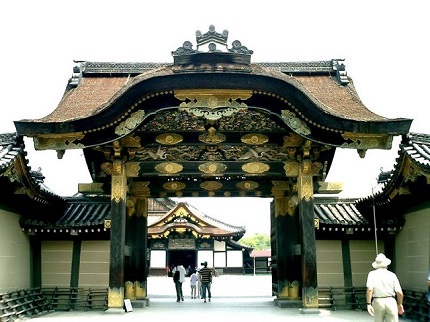-
- USA/Canada 1-800-285-2726
- Australia (02) 8006 4411

Nijo Castle was built in 1603 as the Kyoto residence of Tokugawa Ieyasu, the first shogun of the Edo government. Main court was burnt down in 1788 so only the Second court maintains its original form. The present Main court was built in 1827 modeling after one which stood in the grounds of Kyoto Imperial Palace. The castle has many cultural treasures including Chinese Gate and Second Court buildings dating from Momoyama Era (16th Century), and is designated a national treasure for its splendid architecture and interior decoration. The castle is currently listed as a World Heritage Site.
In the Outer Ward of Nijo Castle is the Ninomaru Palace, which spans over 3,300 square meters, or 36,000 square feet. The palace is extravagant and decorated with gold leaf and intricate wood carvings. Moreover, Ninomaru Palace is known for its hallways (uguisubari
) that squeak when anyone walks on them, which was intentionally created to alert occupants of any intruders or assassins.
In the springtime, over four hundred trees, of 50 different cherry blossoms bloom there, making it a popular spot view cherry blossoms.
Visit Kyoto and all of its World Heritage Sites on your next trip to Japan on one of our Cherry Blossom tours!
Former Capital of Japan - Golden Pavilion
Japanese Major World Heritage Site
Japanese Major Castles
Buddhist temple known as Kode-dera or Moss Temple
Famous for its 1001 statues of Kannon, the Goddess of mercy
Kyoto's most famous geisha district; experience geiko and maiko entertainment
Iconic temple covered in pure gold leaf
Kimono Show and Demonstrations.